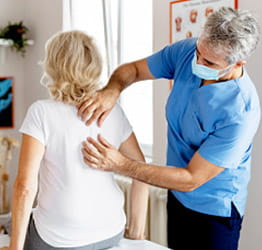Protecting yourself against a possible stroke starts with understanding your risk factors. Although some risk factors cannot be controlled, others can. By managing your controllable risk factors, you can reduce your stroke risk.
Stroke Risk Factors
Uncontrollable risk factors
- Age — Stroke risk increases for those older than 55.
- Gender — More women have strokes than men because women live longer, but men have strokes at a younger age than women.
- Genetics — Having a family history of stroke increases your risk.
- Medical history — If you have had a transient ischemic attack (TIA), or a "mini-stroke," you are 10 times more likely to have a stroke than someone who has not.
- Race and ethnicity — African Americans are two times more likely than Caucasians of the same age to have a stroke.
Controllable risk factors
Managing Your Stroke Risk
Do what you can to change the stroke risk factors you can control, including:
- Get educated on stroke — Know your risk factors, the symptoms of stroke, and what to do in a stroke emergency.
- If you smoke, quit — Find smoking cessation help.
- Keep your medical appointments — Routine follow-up care can help you proactively manage your stroke risk.
- Know your cholesterol levels — If your LDL, or "bad cholesterol," is elevated, start a low-fat, low-cholesterol diet and take medication if directed.
- Manage your weight — Eat healthy and exercise.
- Monitor your health — Check your blood sugar if you are a diabetic. Check your blood pressure.
- Take your medications as prescribed — This is especially true for heart, blood pressure, blood-thinning, and diabetes medications. If you can't afford your medications, let your doctor know.
How to Spot Stroke B.E. F.A.S.T.
We recommend that everyone learn how to quickly spot a person having a stroke by remembering this easy acronym: B.E. F.A.S.T.
- Balance — Ask the person to stand up straight. Are they steady or do they feel dizzy or off-balance?
- Eyes — Ask if they’re experiencing double or blurry vision. Are they having trouble seeing clearly?
- Face drooping — Ask the person to smile. Is one side of their face drooping down or feeling numb?
- Arm weakness — Ask the person to raise their arms. Does one arm drift downward? Is it weak or numb?
- Speech difficulty — Ask the person to repeat a simple sentence, like "the sky is blue.” Are they able to understand? Did they repeat the sentence correctly? Is their speech slurred or hard to understand?
- Time to call 911 — If the person shows any of these symptoms – even if they go away – call 911 to get transportation to a hospital immediately.
Other signs to look out for are anything sudden, including:
- Confusion or trouble understanding.
- Numbness of an arm or leg.
- Severe headache with no known cause.
- Trouble seeing in one or both eyes.
- Trouble walking, dizziness, loss of balance or coordination.
















